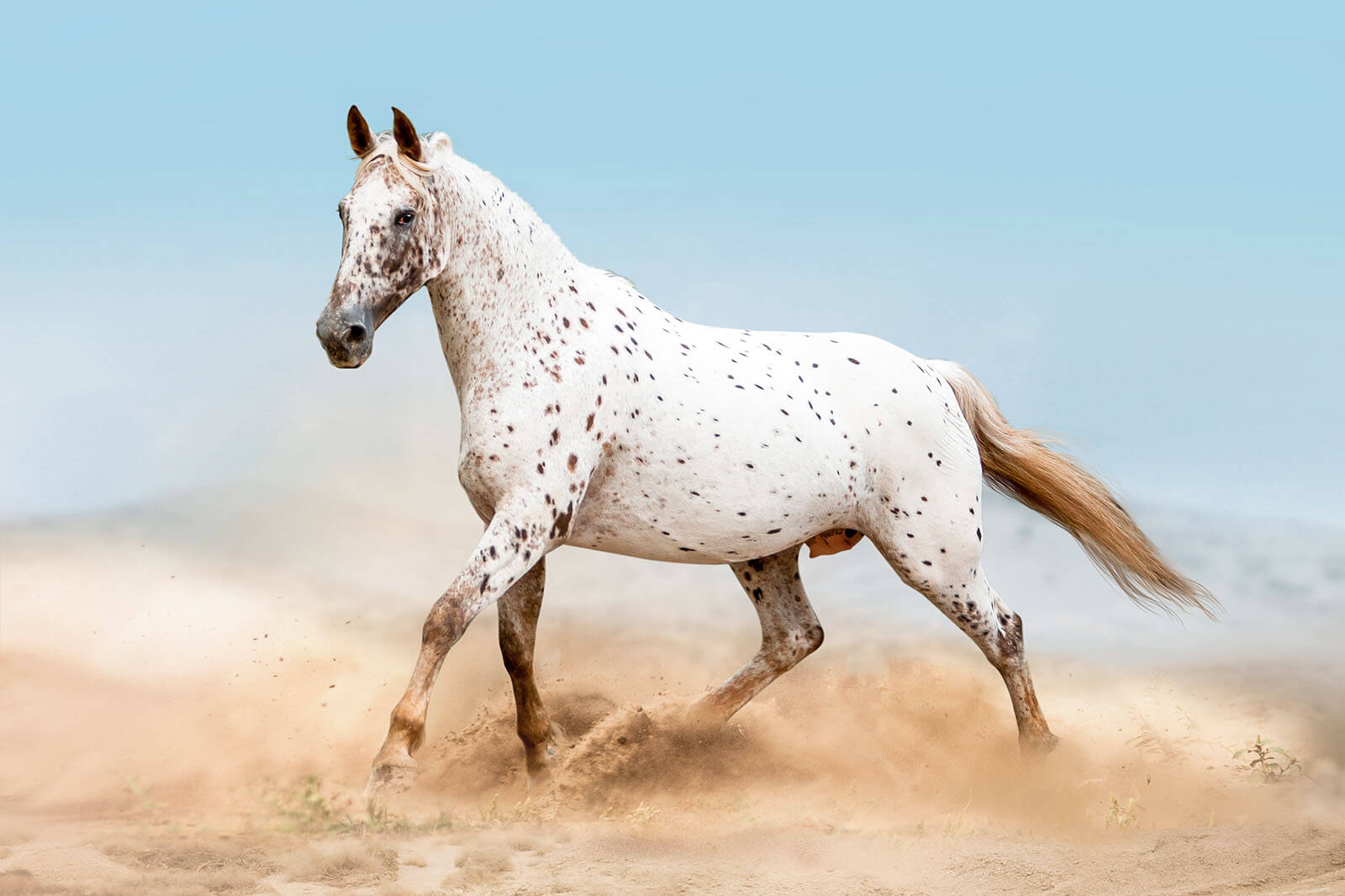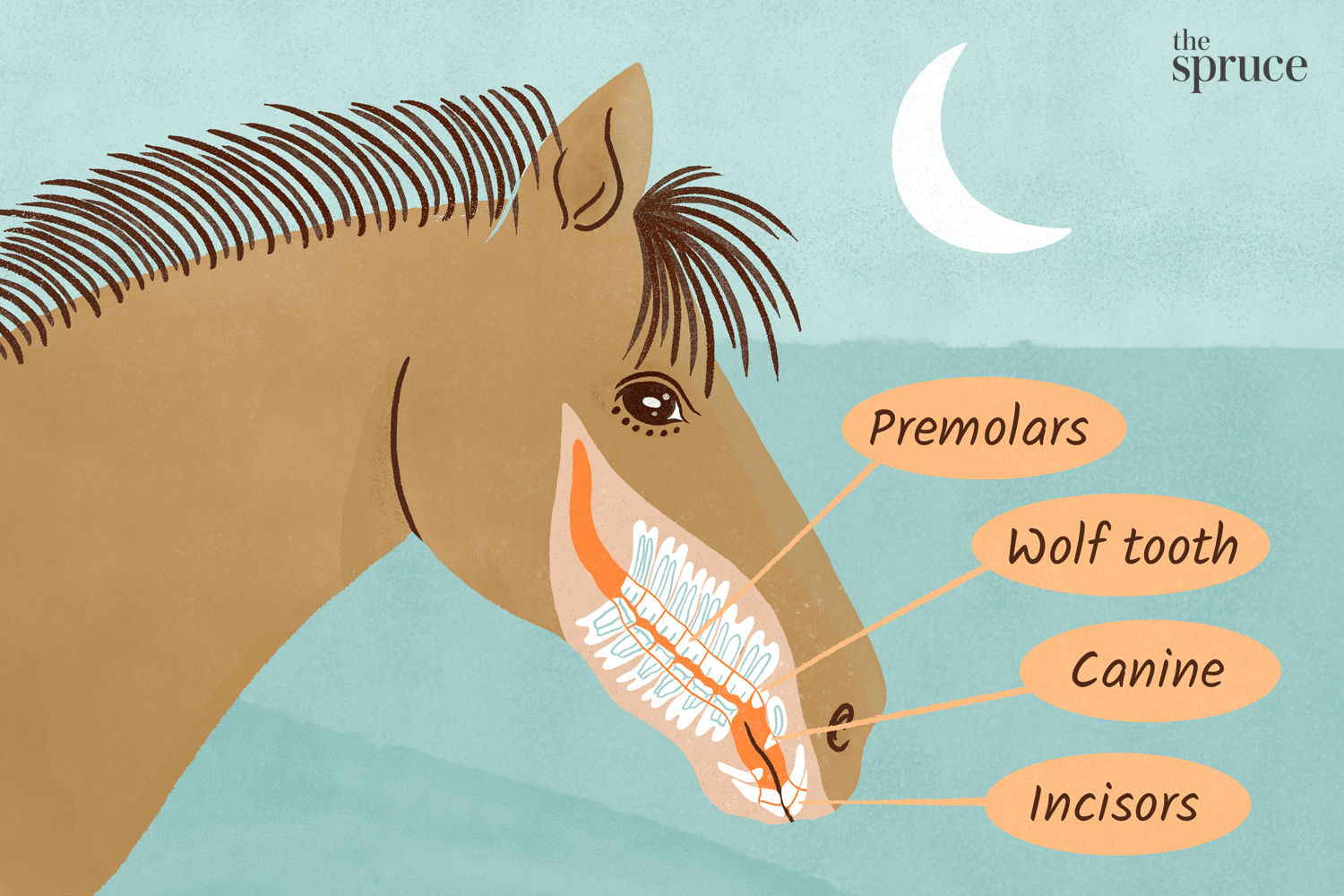When considering the complexities of animal anatomy, the dental structure of horses is a fascinating topic that often intrigues equine enthusiasts and professionals alike. The number, type, and health of a horse’s teeth are vital for its well-being, directly affecting its ability to graze and process food. In this comprehensive exploration of equine dentition, we will delve into the intricacies of horse teeth count, types, and dental care to ensure a clearer understanding of these magnificent creatures.
The question “How Many Teeth Do Horses Have?” yields a straightforward answer:
- Young horses start with 24 deciduous, or milk teeth – 12 incisors and 12 premolars.
- Adult male horses typically have 40-42 permanent teeth.
- Adult female horses usually have 36-40 permanent teeth, depending on the presence of canine teeth.
- Overall, a fully-developed horse around five years old will have between 36 and 44 teeth.
Detailed Insights into Equine Dental Development

Grasping the development and variations in the dentition of horses is crucial for their health and maintenance. As equine age, their dental requirements evolve, making it essential to understand the progression from a young horse’s initial set of teeth to the comprehensive adult array.
Dental Numbers and Care in Mature Horses
The number of teeth in mature equines can differ due to factors such as the horse’s sex and genetic background. It is important for equine caretakers to recognize these differences to provide individualized dental attention.
Early Stages of Equine Dental Growth
From birth, foals show a swift expansion in their dental framework. The period when milk teeth are present is critical as it establishes the groundwork for their adult dental configuration, which is indicative of their health status over time.
Initial Tooth Eruption in Young Horses
In young horses, the initial set of teeth, also referred to as milk teeth, appear early in life. These will be replaced as the horse grows older. For instance:
- Deciduous incisors can surface within the first week post-birth.
- A complete set of milk teeth is generally in place by the time a foal reaches six to eight months.
Gradual Replacement by Permanent Teeth
The replacement of milk teeth with permanent ones is a steady transition that usually starts when the horse is around two and a half years old. During this time, it is common to observe a mix of temporary and permanent teeth.
Differences in Dental Structures Among Genders
There are distinct differences in the dental anatomy of male and female horses. It’s more common for male horses to have additional teeth like canines and wolf teeth compared to females, which influences the total number of teeth they may have.
Characteristics of Canine Teeth in Horses
Canine teeth in equines are often situated in the gap between the front and cheek teeth. Their emergence typically occurs between the ages of four and six, and they are more frequently seen and more pronounced in male horses.
The Role of Wolf Teeth in Equine Dentistry
Wolf teeth may be small but can significantly affect a horse’s comfort and how they respond to bitting. These teeth should be taken into account as part of the horse’s comprehensive dental care.
Composition of the Equine Permanent Teeth Set
By five years of age, an equine will usually have a complete set of permanent teeth that include:
- 12 incisors that assist in grazing.
- A set of premolars and molars that are essential for efficient mastication.
- Variable numbers of canines and wolf teeth that are dependent on the horse’s sex and genetic traits.
The assortment and function of teeth in mature horses underscore their evolutionary development, catering to their dietary habits and survival in diverse habitats. The adult horse teeth count is, thus, an integral part of understanding their overall adaptability.
Advanced Insights into Horse Dental Health and Care

Examining the horse dental anatomy provides insight into the specialized structures that enable horses to meet the challenges of their dietary needs. Ensuring effective equine dental care is crucial not only for preserving the horse’s ability to feed efficiently but also for preventing various health complications that can arise from dental issues.
Incisors at Work
Located at the front, these teeth are the first to engage with food and are designed with sharp edges to fulfill their cutting function:
- Central incisors act as the initial point of contact.
- Intermediate incisors bolster the cutting process.
- Corner incisors are involved in managing more resilient vegetation.
Role of Cheek Teeth: Molars and Premolars
Further back in the mouth, these teeth are essential for food processing:
- Premolars begin the breakdown of larger food chunks.
- Molars finalize the grinding into a digestible state.
This grinding is pivotal for proper digestion and nutrient extraction.
Other Teeth: Understanding Canines and Wolf Teeth
Though not pivotal for feeding in contemporary equines, canines and wolf teeth are evolutionary vestiges. Their relevance is associated more with how they may affect bitting:
- Canines are more common in males and are usually not used for feeding.
- Wolf teeth may be removed to avert discomfort in the mouth.
Essential Practices for Equine Dental Maintenance
Maintaining horse dental health requires consistent care, which includes:
- Periodic dental examinations by a professional.
- Floating to rectify irregularities on tooth surfaces.
- Monitoring for behavioral changes indicative of oral issues.
Recognizing Dental Disorders
Keen observation is necessary for the early identification of dental problems. Addressing conditions such as tooth decay, gum disease, and abnormal tooth growth early on can ward off severe health issues.
Dietary Effects on Dental Condition
A horse’s diet has a significant impact on tooth wear and condition. Changes in feeding practices due to domestication may require more frequent dental intervention:
- Fibrous diets encourage natural tooth abrasion.
- Processed feeds might lead to irregular tooth wear.
Technological Progress in Dental Treatments for Horses
Recent advancements have enhanced the capabilities of equine dental practitioners:
- Endoscopic technology provides an in-depth examination of the mouth.
- Radiographic imaging aids in the detection of concealed dental issues.
Grasping the subtleties of horse dental anatomy is indispensable for caretakers. Proficient management of equine dental care is a key factor in ensuring the well-being and longevity of horses, highlighting the importance of continuous learning and vigilance in this field of equine health.
Insights into the Evolution and Functionality of Equine Teeth

Delving into the evolution and functionality of equine teeth reveals how they have uniquely adapted over time. Each tooth in a horse’s mouth is specialized to handle different aspects of their diet, and an understanding of these adaptations is pivotal for ensuring their health and adaptability in various habitats.
Transition from Milk to Adult Teeth
As foals grow, their milk teeth are replaced by permanent teeth, signifying their development into maturity. These new teeth are designed to endure the rigors of grazing and grinding tougher plant material.
Structural Adaptations in Equine Teeth
The design of equine teeth is a reflection of their dietary requirements. Each tooth is equipped with features that facilitate efficient feeding and longevity, such as:
- Deeply rooted crowns that continuously emerge to compensate for wear.
- A complex enamel pattern that enhances the grinding process.
Canine and Wolf Teeth: Vestiges of Evolution
While not involved in the direct act of feeding, canine and wolf teeth are interesting evolutionary remnants in horses. Their role is more related to the horse’s age and sometimes to equine dental practices.
Specialized Attributes of Incisors and Cheek Teeth
In the equine mouth, incisors and cheek teeth play distinct roles that facilitate grazing and food processing. Incisors have adapted to snip vegetation efficiently while cheek teeth are designed for grinding forage into a digestible form, thanks to their:
- Enamel ridges that create an optimal grinding surface.
- Sturdy roots that enable powerful chewing.
Additional Dental Features in Horses
Other dental features in horses, though not as widely recognized, serve as indicators of age or play a part in equine activities:
- Galvayne’s groove, which appears on the upper corner incisor and correlates with age.
- The interdental space, which accommodates the bit, is essential for ridden horses.
The specialized teeth of horses, from their incisors to their molars, demonstrate the intricate evolution of horse dentition and underscore the necessity of informed and attentive dental care. It is the combination of these dental characteristics that equips horses to meet their nutritional needs and thrive in a variety of ecosystems.
Proactive Monitoring for Equine Dental Health

For horse owners and caretakers, staying alert to the health of their equine’s teeth is essential. Early detection of dental problems can mitigate more severe complications. Symptoms like chewing difficulties, increased salivation, or bad breath may prompt the need for a veterinary or dental expert’s care. Behavioral changes, such as head shaking or resistance to the bit, could also suggest dental discomfort.
Signs Indicative of Potential Oral Issues
Observing certain behaviors and physical signs can point to the necessity for a dental checkup:
- Quidding, where food is dropped from the mouth, indicates trouble with chewing.
- Excessive drooling may be a reaction to oral pain.
- Swelling on the face or nasal discharge could signal a tooth or sinus problem.
- A reluctance to eat or a shift toward softer foods often signals mouth pain or discomfort.
Common Dental Ailments in Equines
Several dental issues can affect horses, impacting their overall health:
- Gum disease can progress to tooth loss and systemic infection.
- Uneven wear of teeth might cause sharp edges, leading to soft tissue injuries.
- Persistent baby teeth may obstruct the growth of adult teeth.
- Abnormalities in tooth alignment can disrupt the chewing process.
Behavioral Indicators of Oral Discomfort
Changes in a horse’s behavior can be valuable indicators of oral discomfort. Paying attention to these signs is important:
- Resistance to bridle use or irritation while grooming near the head may indicate pain.
- Atypical head movements or tossing, especially during meals or riding, can be a reaction to dental pain.
- Performance issues may arise if a horse is distracted by discomfort in the mouth.
Detecting and Managing Dental Disorders
Equine dental professionals have an array of techniques for diagnosing dental conditions:
- Use of a full-mouth speculum allows for detailed examination of the oral cavity.
- Palpating the jaw and face can reveal irregularities or swelling.
- Gum probing helps in detecting potential periodontal issues.
Regular dental examinations are vital for early identification of oral irregularities, often before they manifest visibly. By understanding and recognizing the signs of dental issues in horses, caretakers can ensure the health and longevity of these animals through proactive dental care.
If you’re curious about the anatomy and genetics of horses, you’ll find our collection of articles quite enlightening. While you’re learning about how many teeth horses have, you might also be interested in exploring other fascinating aspects of these majestic creatures. Discover how many vertebrae horses have, delve into the details of how many chromosomes are in their cells, and even find out how many nipples they possess. Each feature provides insight into the evolution and biology of horses, enriching your knowledge about this beloved species.
Horse Teeth Age Chart

Estimation of Age by Examination of the Teeth
Historically, the condition and wear pattern of a horse’s teeth were used as a primary method of age estimation. A horse teeth age chart can provide general guidelines, but today, more accurate records like equine passports have made determining the age of a horse more precise.
In conclusion, understanding the number and types of teeth horses have is essential for their care. From the 24 deciduous teeth of a young foal to the full set of 36 to 44 teeth in an adult, each tooth plays a crucial role in the animal’s health and well-being. Regular dental care, awareness of potential dental issues, and a knowledge of equine dental anatomy are all important components of responsible horse ownership and management.



